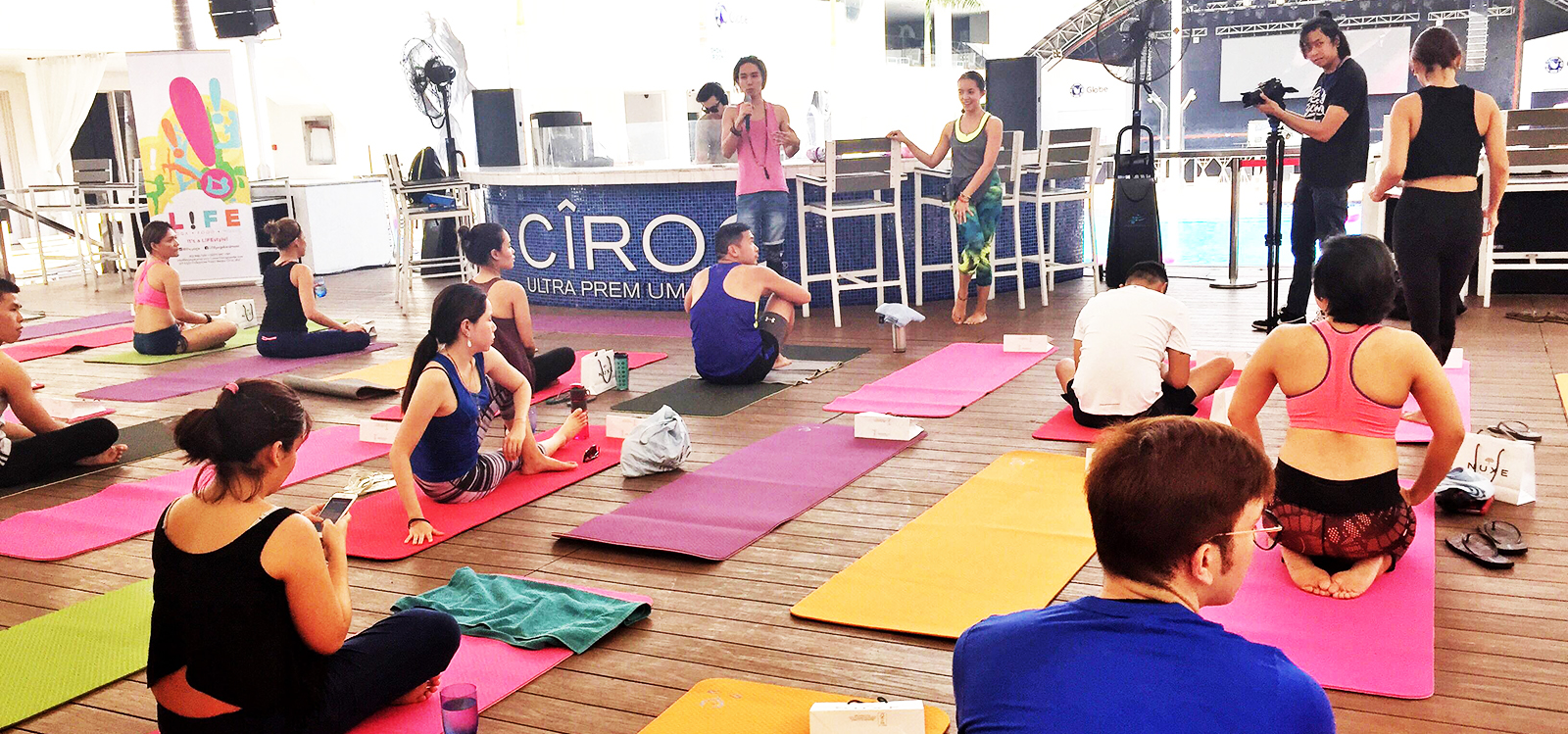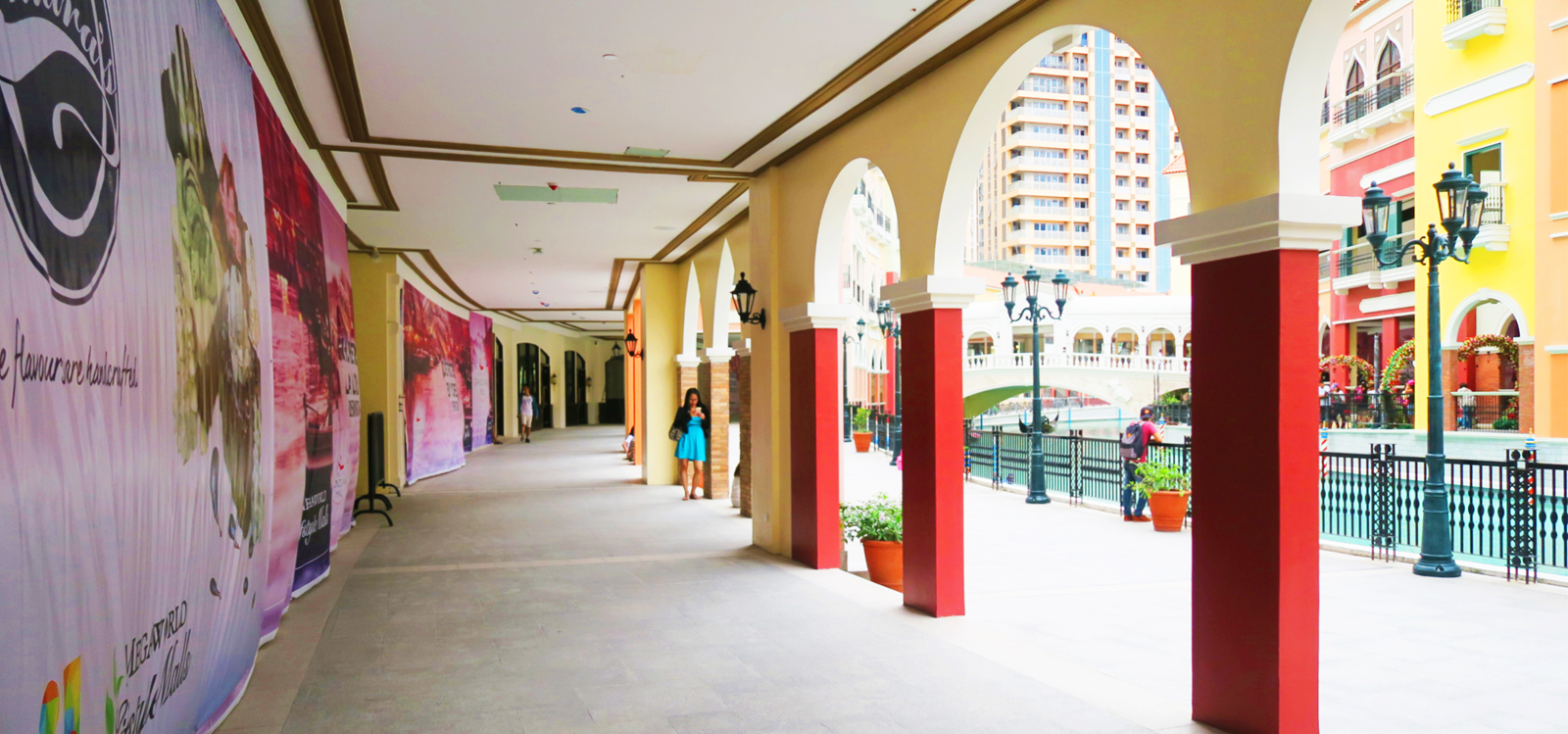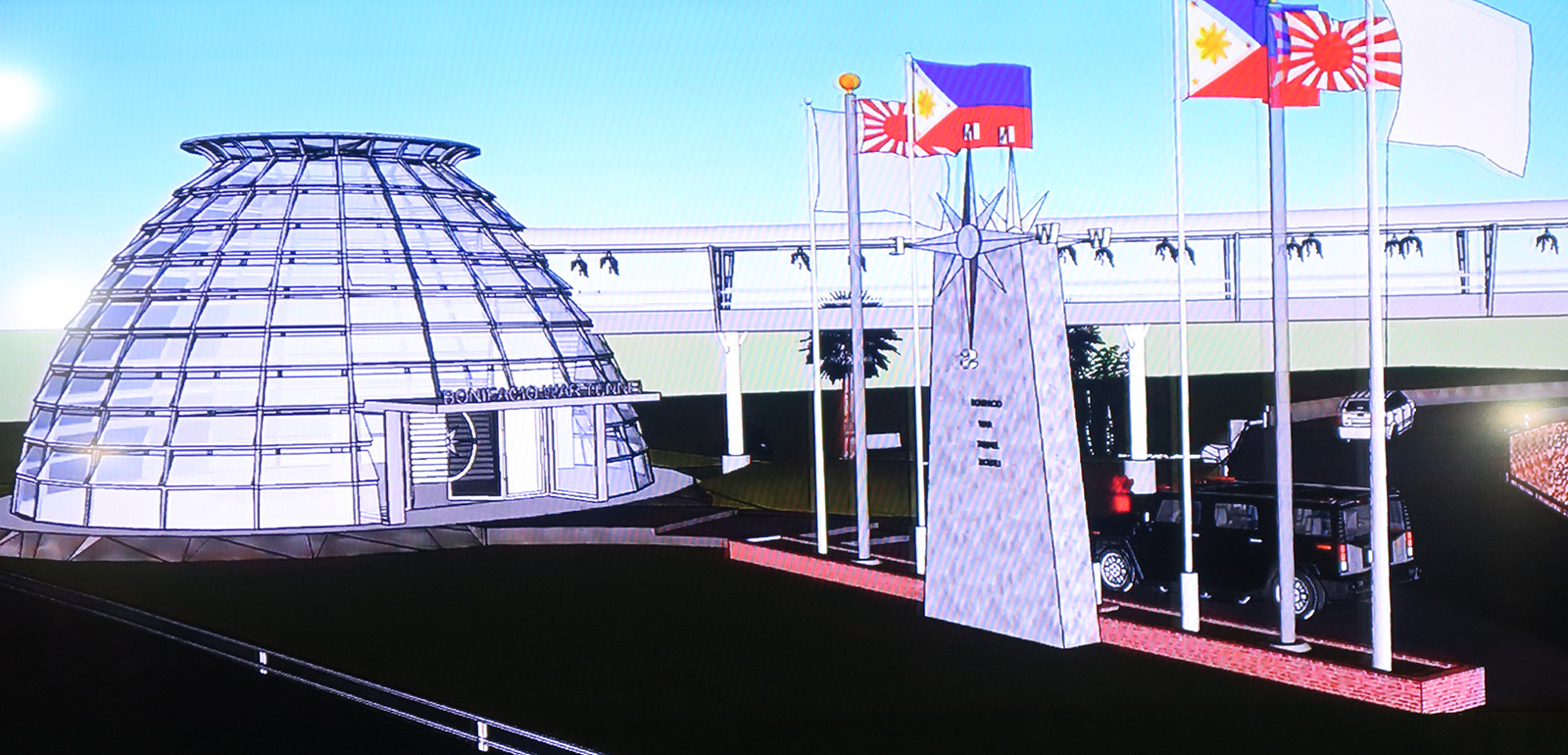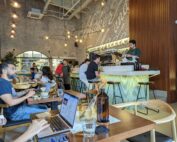Fort Bonifacio War Tunnel : Background and Update
Did you know that there is a war tunnel lying beneath a portion of the C5 Highway near the Market! Market! Mall? We wrote about The Fort Bonifacio War Tunnel in an early article. Recently, we contacted the authority in charge of its future, the Bases Conversion and Development Authority (BCDA), and obtained background information and updates about the tunnel.
Brief History of the Fort and Its War Tunnel
According to the research done by the National Historical Commission of the Philippines, the Fort tunnel was part of Fort Bonifacio, a military base built by the US Military Government of the Philippines in 1902 that was originally named Fort William McKinley. 
Below are photos made from actual footage and enhanced by computer simulation, showing the location of one of the entrances of the war tunnel.
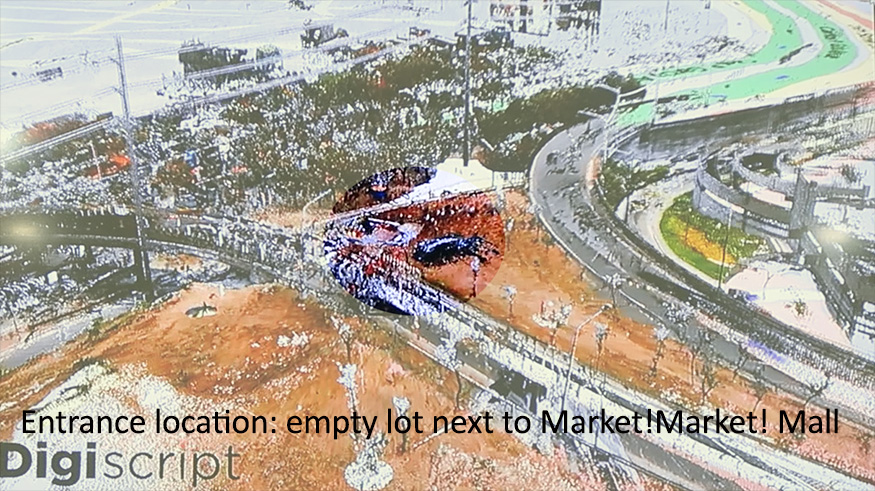
The Fort McKinley Tunnel was intended for the creation of an underground aerial bombing-free Air Warning Service of the Army Air Force known as ÔÇ£The Fort McKinley ProjectÔÇØ. It was to be a part of the modernization of the countryÔÇÖs communication facilities. Digging for the tunnel began in October 1941. The Pacific war erupted on 8 December 1941. By evening, Fort McKinley was targeted. On 9 December 1941, the Japanese bombed Fort McKinley. The Air Warning Service headquarters was totally obliterated, killing all inside.
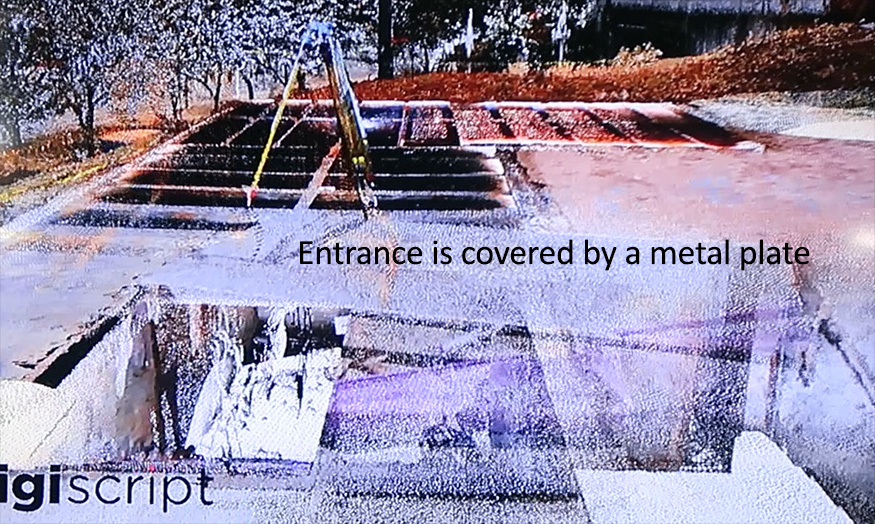
On 2 January 1942, the Japanese entered Manila. They immediately captured Fort McKinley, turning it to one of their important installations and renaming it Sakura Heiei (Cherry Blossom Barracks). 
After their arrival in 1942, the Japanese continued extending further the tunnel but left it when ManilaÔÇÖs liberation campaign started in October 1944. As the US Air Force started bombing Manila, the Sakura HeieiÔÇÖs tunnel served as shelter of the high military officials. On 13 February 1945, the Japanese abandoned Fort McKinley.
In 1949, the base was transferred to the Philippine Government and renamed Fort Bonifacio. It became the Philippine Army headquarters. The tunnel was made into ammunition storage and supply storeroom and later part of the PA Museum and Library.  It was in 1976 when the tunnel was last rehabilitated.  In 1995, the tunnel was officially closed to the public.
For a long version of this history please see this.

Future Plans for The Fort Bonifacio War Tunnel
Since the tunnel is one of the few remaining structures that bear the scar of an important chapter of the military history of the Philippines, many of us would like to see it preserved.
On 11 February 2016, the Bases Conversion and Development Authority (BCDA) kindly gave us a briefing and shared with us their plans to rehabilitate the Fort Bonifacio War Tunnel. According to Mr. Marion Mamauag, BCDA Business Development Officer, and Ms. Maricar Villami, of BCDA Public Affairs Department, the Fort Bonifacio War Tunnel spans a total of 2.24 kilometers, but only 700ÔÇô800 meters of it is explorable for safety reasons.
The tunnel has 32 known chambers, and two of the four entryways are under the management of BCDA: they are (1) the main entryway at the east end of 32nd Street near Market! Market! Parking Building and (2) another along 27th Avenue in East Rembo. The other two entryways are under the jurisdiction of Barangay Pembo, Makati City.
BCDA intends to rehabilitate the war tunnel in two phases. Phase one is to have a feasibility study conducted to assess the stability of the tunnel. This phase was completed recently by an engineering firm, who deemed the tunnel to be structurally sound, but recommended the installation of wire mesh and rock bolts at the ceiling of the explorable portion of the tunnel to improve its condition.
Phase two is to build a museum to preserve the historical value of the tunnel, as well as develop it into a major tourist attraction.

Fort Bonifacio War Tunnel Museum
It was in 2013 that BCDA signed a Memorandum of Agreement (MOA) with the Tourism Infrastructure and Enterprise Zone Authority (TIEZA), National Historical Commission of the Philippines (NHCP) and the National Museum to lay down a framework of cooperation among these agencies.
It is understood that TIEZA has agreed to fund the war tunnel museum project, which is estimated to cost around P105 million. Once funding is available, BCDA is targeting to complete the tunnel in two yearsÔÇÖ time. The engineering firm has proposed several designs for the museum, and BCDA has expressed its preference. It is expected that the bidding for the project will happen on the third quarter of the year.┬á
In a digital tour provided in the briefing, we were able to have a glimpse of the current condition of the tunnel as well as the proposed architectural concept and design of the museum. Photos above show a rendition of one of the proposed structural designs. Photos below are computer-aided drawings of the proposed design inside the museum.

The proposed design is shaped like a mortar to commemorate the nature of the tunnel and would-be museum. It will be located at the main entryway on the east end of 32nd Street and will be accessed via a connecting ramp from the Market! Market! Parking Building. 
The Fort Bonifacio War Tunnel was taken over by both the Americans and Japanese; that is why one portion was named the American side (right) and the other the Japanese side (left). Each side has its own distinct design and artifacts pertinent to the theme so that the experience on one end will be as unique as it is on the other end. Among the attractions in the museum are an Audio Visual Room, Fort McKinley Historical Gallery, McArthur Chamber and Map Room. The 6-meter-deep well at the far end of the American side of the tunnel will also be preserved. 
Since the war tunnel is 30 meters below surface, the design includes a lift mechanism that will make the tunnel accessible to the physically challenged. 
Mamauag also says that the museum will have an overall vintage design not only in the visual aspect, but in the auditory aspect as well to complete the war tunnel experience. The BCDA will partner with The Mind Museum, KidZania and AFP Museum in order to promote The Fort Bonifacio War Tunnel Museum to The Fort citizens and eventually to people outside The Fort.
As one of Metro ManilaÔÇÖs major business districts, there is no doubt that The Fort CityÔÇÖs modernization is on high speed, moving forward into the flourishing future day by day. But for us to appreciate the future, we should never forget to look back to our rich and valuable past. As the Philippine national hero once said, ÔÇ£Ang hindi marunong lumingon sa pinanggalingan ay hindi makakarating sa paroroonan.ÔÇØ (ÔÇ£He who does not know how to look back at where he came from will never get to his destination.ÔÇØ)
Long version of History of the Fort and its war tunnel
(We rely extensively on the research of Ian Christopher B. Alfonso, History Researcher II at the National Historical Commission of the Philippines for the information provided below. Many paragraphs are quoted verbatim from his research report.)
The Fort tunnel was part of Fort Bonifacio, a military base built by the US Military Government of the Philippines in 1902 that was originally named Fort William McKinley. In 1949, the base was transferred to the Philippine Government and renamed Fort Bonifacio. 
The Fort McKinley Tunnel was intended for the creation of an underground aerial bombing-free Air Warning Service of the Army Air Force known as ÔÇ£The Fort McKinley ProjectÔÇØ. It was to be a part of the modernization of the countryÔÇÖs communication facilities. Digging for the tunnel began in October 1941. The Pacific war erupted on 8 December 1941. By evening, Fort McKinley was targeted. On 9 December 1941, the Japanese bombed Fort McKinley. The Air Warning Service headquarters was totally obliterated, killing all inside.
On 12 December, both air and naval powers of the US military forces were paralyzed, causing the transfer all the remaining supplies and gasoline of the Far East Air Force underground to Fort McKinley tunnel. Tunneling work continued while bombing above the ground were taking place.
On 17 December 1941, the 27th Bombardment Group of the Far East Air Force had transferred its headquarters from Nielson Field, a counterpart of the Nichols, to Fort McKinley. Immediately after the relocation, the Fort McKinleyÔÇÖs tunnel was used to house armaments and food supply, and as well served as air shelter for army staff.
On 24 December 1941, the tunneling project and the transfer of Far East Air Force supplies and gasoline reserve to Fort McKinley tunnel (which was being considered for a while) were canceled because MacArthur issued a marching order to all military servicemen to abandon military installations in Manila and suburbs the soonest possible time.  
The said order of abandonment did not reach the officers of Far East Air Force in Fort McKinley immediately. ┬áThe Air Warning Service in the unfinished tunnel still functioned despite bombings on air fields nearby. ┬áIn the afternoon of the same day, Lt. Gen. Lewis Hyde Brereton, the commander of the Far East Air Force in Fort McKinley, received MacArthurÔÇÖs order to proceed to Darwin, Australia and continue the Air Warning Service in cooperation with Australia and the Netherlands. ┬áHe called a meeting and by 4:00 PM, he officially closed Fort McKinley.
On 2 January 1942, the Japanese entered Manila.  They immediately captured Fort McKinley, turning it to one of their important installations and renaming it Sakura Heiei (Cherry Blossom Barracks).  
When the Japanese commander Gen. Tomoyuki Yamashita arrived in Manila in September 1944, he put up his headquarters in Sakura Heiei. After their arrival in 1942, the Japanese continued extending further the tunnel but left it when ManilaÔÇÖs liberation campaign started in October 1944. As the US Air Force started bombing Manila, the Sakura HeieiÔÇÖs tunnel served as shelter of the high military officials, including Yamashita.┬á
When Yamashita ordered the retreat towards northern Luzon in January 1945, Rear Admiral Iwabuchi Sanji of the Japanese Imperial Navy took over Sakura Heiei.  The tunnel had also become an essential refuge for Iwabuchi during the air raids of the US Air Force.  On 13 February 1945, Admiral Iwabuchi and his men abandoned Fort McKinley.
Fort McKinley, which was later renamed Fort Andres Bonifacio, became the Philippine Army headquarters.  The tunnel was made into ammunition storage and supply storeroom and later part of the PA Museum and Library.  It was in 1976 when the tunnel was last rehabilitated under the 51st Engineering Brigade.  In 1995, the tunnel was officially closed to the public.
In 1992, the Bases Conversion and Development Authority was founded, with a mandate to transform former US military bases into alternative productive civilian use, and Fort Bonifacio became one of its assets. In 1994, the government announced a plan to privatize Fort Bonifacio and turn it into another central business district. 
In 1995, the Bonifacio Land Development Corporation, a consortium of business companies led by Metro Pacific Corp won the bid for Fort Bonifacio at a price that was considered outrageously high at that time. Fort Bonifacio was to be developed according to the Master Development Plan approved by the Ramos administration, which would allow the developers to demolish the surface structure and utilize to full extent the tunnel for the fortÔÇÖs development
In early 1996, the Department of National Defense (DND) asked the Department of Tourism (DOT) to help to preserve the underground tunnel and other AFP buildings in Fort Bonifacio. DOT endorsed DNDÔÇÖs request to BCDA.
In March 1997, the Philippine Army, the National Historical Institute (now NHCP) and the DOT joined forces to save the tunnel. The Philippine Army Museum recommended converting sections of the tunnel into lifesize dioramas depicting World War II scenes, and isolating the tunnel by building a planned transport terminal building above it.
The Asian Financial Crisis disrupted the development of Fort Bonifacio. In 2003, Ayala Land, Inc. and Evergreen Holdings, Inc. bought Metro Pacific CorpÔÇÖs shares in BLDC. Since then, the privatized Fort Bonifacio became known as Bonifacio Global City, or popularly known as the Fort. The original structures in the Fort no longer existed, while the tunnels remained intact, but access by the public is closed unless permitted by the BCDA.
In 2011, barangay Pamahalaang of Pembo of Makati City applied for funding from Makati City hall to rehabilitate Fort Bonifacio Tunnel Exit in Morning Glory Street of the barangay to become part of an eco-park. Its immediate surroundings were a former vegetable garden of Pembo Elementary School.
The barangay was granted in 2011 and 2012 a total of 2 million pesos to remove soil and mud stuck inside the exit for many years. 
Aside from the Morning Glory StÔÇÖs tunnel exit, the barangay also wants to rehabilitate two other tunnels located in Pembo, one in Calachuchi Street, the other in Upper Amapola Street.┬á
The Fort Bonifacio Tunnel is different from these other tunnels and is under the administration of BCDA. In September 2012, BCDA announced its rehabilitation plan of the tunnel in partnership with the Fort Bonifacio Development Corporation (FBDC). BCDA President and CEO Arnel Casanova is quoted by the mass media as saying that ÔÇ£Preserving the heritage of Fort Bonifacio and incorporating its heritage and history in the development of BGC is what makes BGC a cut above other cities.ÔÇØ According to him, Incorporating its history in the development of Bonifacio Global City will give it a soul. We could not agree more.

